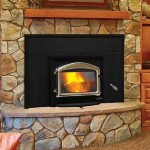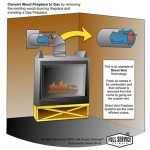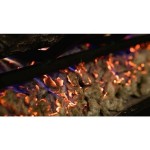How to Clean a Brick Fireplace Hearth
A brick fireplace hearth, while adding character and warmth to a home, often accumulates soot, ash, and other debris from regular use. Maintaining a clean and inviting hearth requires consistent effort and knowledge of appropriate cleaning techniques. This article provides comprehensive instructions on how to effectively clean a brick fireplace hearth, ensuring its longevity and aesthetic appeal.
Preparation: Gathering Supplies and Safety Measures
Before commencing the cleaning process, it is crucial to gather the necessary supplies and prioritize safety. This involves selecting appropriate cleaning agents, tools, and protective gear.
The first step is to assemble the required cleaning supplies. These generally include:
- A stiff-bristled brush: This is essential for scrubbing away loose debris and soot from the brick surface.
- A vacuum cleaner with a hose attachment: Used for removing dry debris like ash and loose soot.
- A bucket: To hold water and cleaning solutions.
- A sponge or cloth: For applying cleaning solutions and wiping down the brick.
- Protective gloves: To protect hands from harsh chemicals and abrasive materials.
- Eye protection: To prevent cleaning solutions or debris from entering the eyes.
- A cleaning solution (see options below): The appropriate solution depends on the severity of the staining and the type of brick.
Several cleaning solution options are available, ranging from mild to strong. The choice depends on the extent of the soot and grime. Here are some common choices:
- Mild Dish Soap and Water: This is a good starting point for lightly soiled hearths.
- Baking Soda Paste: A natural abrasive that can help lift stains. Mix baking soda with water to form a paste.
- Vinegar and Water Solution: Vinegar is a mild acid that can help dissolve mineral deposits and some stains. Use a 1:1 ratio of white vinegar to water.
- Commercial Brick Cleaner: These are specifically formulated to remove soot and grime from brick. Always follow the manufacturer's instructions carefully.
- Trisodium Phosphate (TSP): A powerful cleaner that should only be used for heavily soiled hearths. TSP is caustic and requires careful handling and thorough rinsing. Always wear gloves and eye protection when using TSP.
Safety is paramount when cleaning a fireplace hearth. Always wear gloves and eye protection to prevent irritation from cleaning solutions and contact with soot or ash. Ensuring adequate ventilation is also crucial, especially when using chemical cleaners. Open windows and doors to allow for proper airflow.
The Cleaning Process: Step-by-Step Instructions
Once the supplies have been gathered and safety precautions have been taken, the cleaning process can begin. Adhering to a systematic approach ensures a thorough and effective cleaning.
The first step is to remove loose debris. Use the stiff-bristled brush to sweep away loose ash, soot, and any other debris from the hearth. Pay particular attention to crevices and corners where debris tends to accumulate. Immediately following sweeping, vacuum the hearth thoroughly using the hose attachment. This will remove the remaining loose particles and prevent them from being spread around during the cleaning process.
Next, apply the chosen cleaning solution. If using mild dish soap and water, simply mix a small amount of dish soap with warm water. If using baking soda paste, apply a thick layer to the stained areas. For a vinegar and water solution, mix equal parts white vinegar and water in a spray bottle or bucket. When using a commercial brick cleaner or TSP, carefully follow the manufacturer's instructions. Apply the cleaning solution evenly to the brick surface, focusing on areas with heavy soot or staining. Allow the solution to dwell on the brick for the recommended time, typically 5-10 minutes, to allow it to penetrate and loosen the grime. This dwell time is critical for effective cleaning, but avoid letting the solution dry on the brick surface.
Following the dwell time, scrub the brick thoroughly with the stiff-bristled brush. Apply firm, even pressure to dislodge the soot and grime. Pay close attention to grout lines, which are often difficult to clean. For stubborn stains, consider using a smaller scrub brush or toothbrush to target those areas specifically. The goal is to mechanically remove the loosened debris without damaging the brick surface. Avoid using excessive force, as this could damage the brick or grout.
After scrubbing, rinse the hearth thoroughly with clean water. Use a sponge or cloth to wipe away the cleaning solution and any remaining residue. It is essential to remove all traces of the cleaning solution, as any residue can attract dirt and grime in the future. For areas that are difficult to reach, consider using a spray bottle filled with clean water to rinse the brick. Repeat the rinsing process until the water runs clear and no signs of cleaning solution remain.
Finally, allow the hearth to dry completely. Open windows and doors to promote air circulation. A fan can also be used to speed up the drying process. Ensure the brick is completely dry before using the fireplace again to prevent moisture damage and the absorption of more soot. Depending on the humidity and temperature, this drying process can take several hours or even overnight.
Addressing Stubborn Stains and Preventing Future Buildup
In some cases, stubborn stains may persist despite the initial cleaning efforts. Additionally, implementing preventative measures can significantly reduce future buildup of soot and grime.
For persistent stains, consider using a poultice. A poultice is a paste that is applied to the stain and allowed to dry, drawing out the stain as it dries. Several poultice options are available.
- Baking Soda Poultice: Mix baking soda with water to form a thick paste. Apply the paste to the stain and cover with plastic wrap. Let it sit for 24-48 hours, then remove the plastic wrap and allow the paste to dry completely. Scrape off the dried paste and rinse the area with clean water.
- Hydrogen Peroxide and Baking Soda Poultice: Mix hydrogen peroxide with baking soda to form a paste. Apply the paste to the stain, cover with plastic wrap, and let it sit for several hours or overnight. Remove the plastic wrap, allow the paste to dry, scrape it off, and rinse with clean water.
- Commercial Poultice: Several commercial poultice products are available specifically for removing stains from brick. Follow the manufacturer's instructions carefully.
If the stain persists, consult with a professional brick cleaner. They may have access to stronger cleaning solutions and techniques that are safe for use on brick. Avoid using harsh chemicals or abrasive tools that could damage the brick surface.
Preventative measures are crucial for maintaining a clean fireplace hearth and minimizing the frequency of deep cleaning. Regularly sweeping or vacuuming the hearth after each use can prevent the buildup of ash and soot. Using a fireplace screen can help contain sparks and embers, reducing the amount of soot that escapes onto the hearth. Burning seasoned wood, which burns more cleanly than green wood, reduces soot production in the fireplace. Regularly cleaning the chimney also reduces soot buildup, which can then be deposited onto the hearth. Consider applying a brick sealant to the hearth to protect it from stains and make it easier to clean. A brick sealant forms a protective barrier that prevents soot and grime from penetrating the brick surface. Follow the manufacturer's instructions carefully when applying a brick sealant.
Maintaining a clean brick fireplace hearth requires a combination of diligent cleaning practices and proactive preventative measures. By following these guidelines, homeowners can preserve the beauty and functionality of their fireplace hearth for years to come.

How To Clean A Fireplace Diy Basics

How To Clean Fireplace Bricks 9 Steps With S Wikihow

How To Clean Brick Fireplaces Mantels Hearths And More My Space

How To Clean Fireplace Bricks Simple Practical Beautiful

How To Clean Brick Fireplace Kitchen Infinity

Fireplace Cleaning Tutorial Kippi At Home

Best Way To Clean A Fireplace Stacy Risenmay

How To Clean A Fireplace Diy Basics

Mortar Wash Brick Fireplace Makeover Dimples And Tangles

How To Create An Exposed Brick Feature Wall Or Fireplace And Clean Maintain It Like Expert Manchester Evening News
Related Posts








